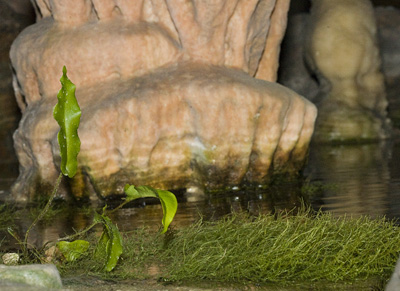The Protoctista Kingdom includes one celled and simple multicelled protozoa, slime moulds and algae.
Protozoans
These are minute one-celled organisms and include the simplest ‘animals’ such as amoeba, sporozoans and flagellates. Being unicellular (made up of only one cell), you will need a microscope to see them. They are present in large numbers yet have been little studied in caves. Some probably live in the caves and others are washed in.
Slime moulds
These strange things are amoeba-like during their feeding stage, and produce brightly coloured fungi when mature. They have characteristics of both plants and animals.
Algae
Some free living algae are found deep in caves and some have an absence of chlorophyll. These algae use non-photosynthetic metabolic pathways to survive without light. Many species exist in the soil. Organic matter in water can be used as a substitute for photosynthesis by algae.
Some of these micro-organisms (algae, bacteria and small fungi) are eaten by cave insects, others may live inside the insect digestive system, both enabling the cave insect to survive in an environment where food is scarce.
Higher Plants
Higher plants (higher refers to their more advanced structure rather than height) need sunlight and are only found above ground, consequently they are limited to the threshold zone of caves, although roots can be seen deeper into the cave if the passage lies sufficiently close to the surface.
|


